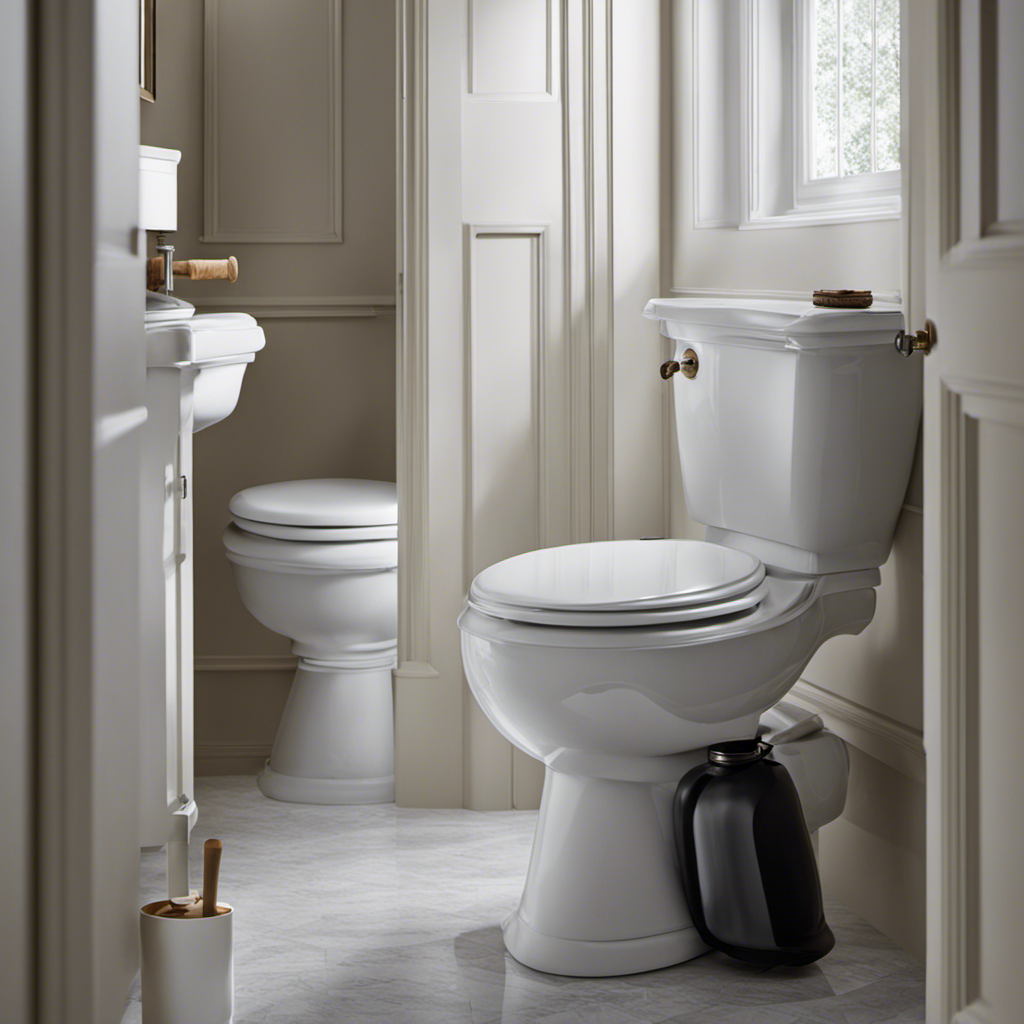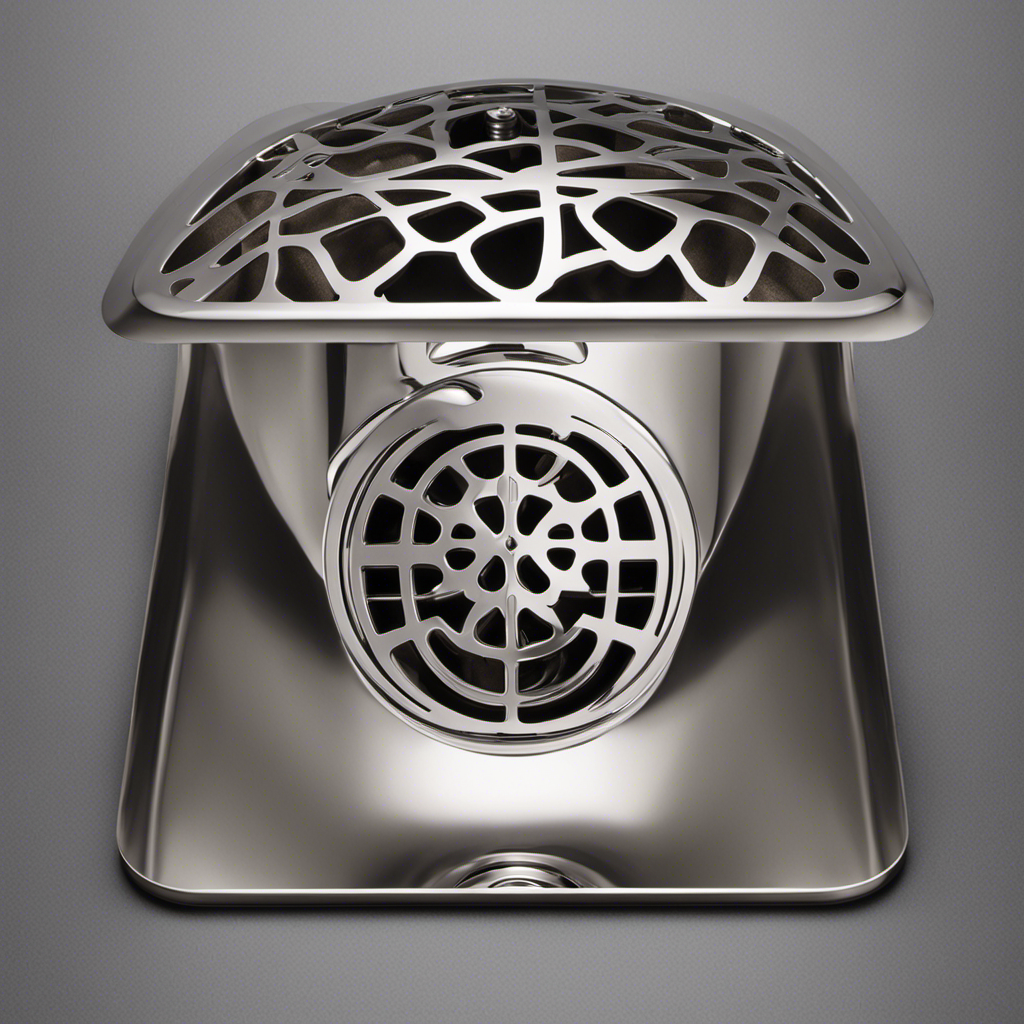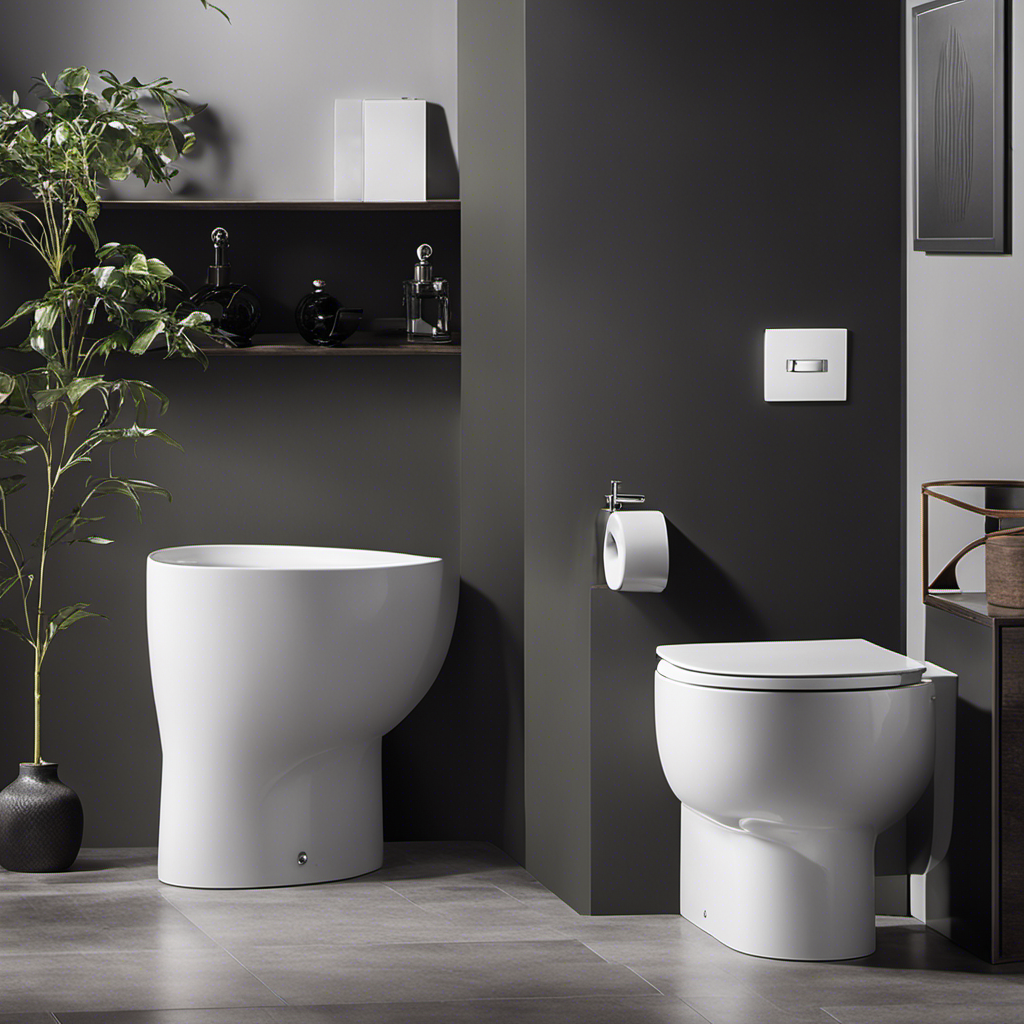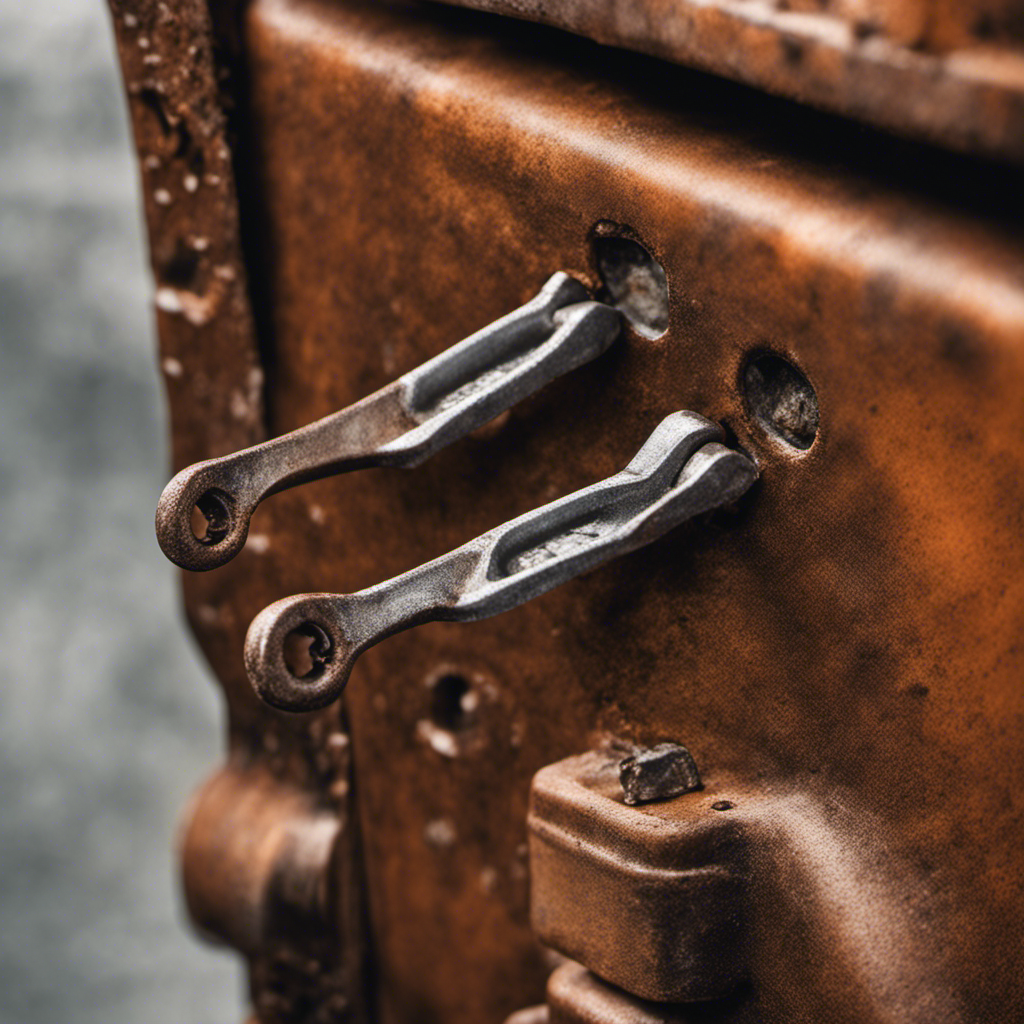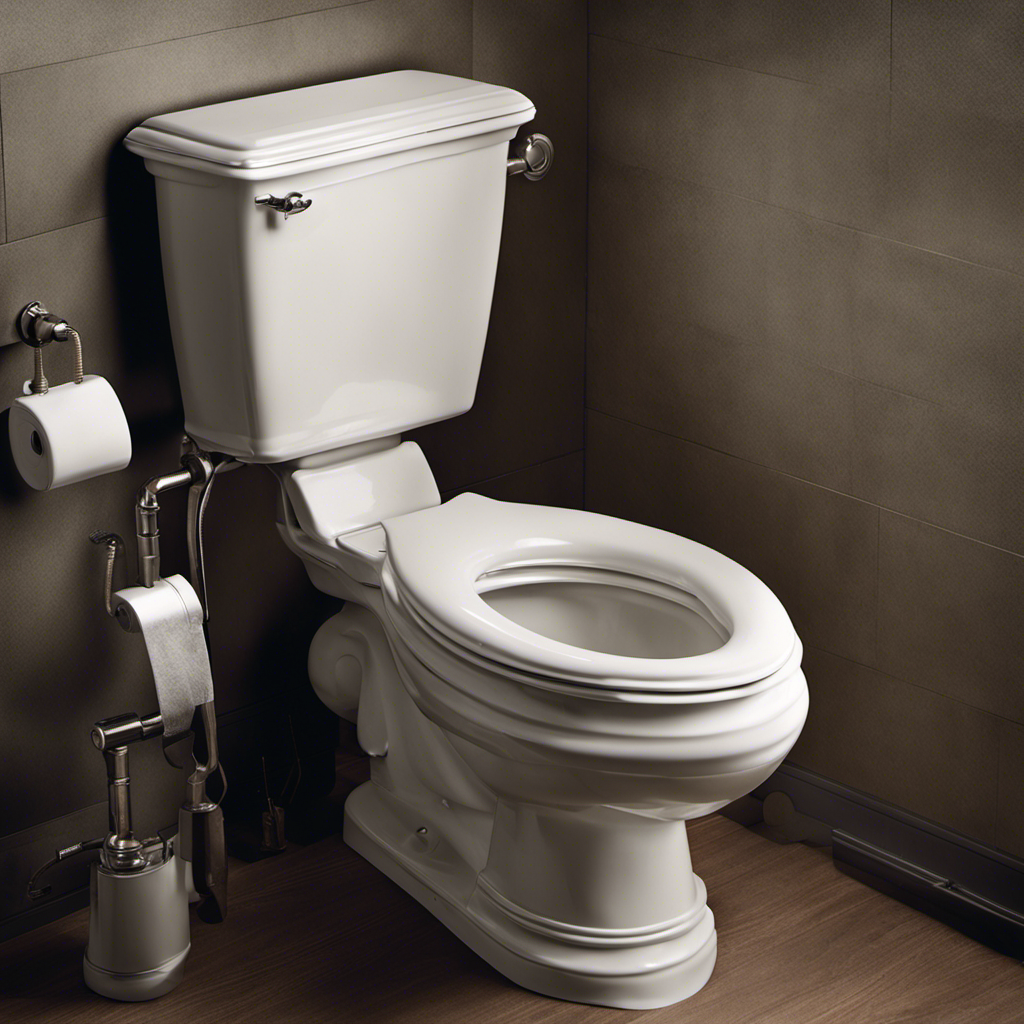Hey there! Ever experienced the frustration of a clogged toilet? Trust me, I’ve been there too.
But fear not, because I’ve got you covered with some awesome solutions, tips, and tricks to unclog that stubborn toilet.
From using a trusty plunger to trying out natural remedies like baking soda and vinegar, we’ll explore all the best methods to get your toilet back in working order.
So, let’s dive into the world of toilet clogging solutions and banish those clogs for good!
Key Takeaways
- Use a toilet plunger or auger to remove clogs in the toilet drain.
- Utilize detergent, hot water, baking soda and vinegar, or dish soap and hot water to help clear clogs.
- Address factors such as mineral deposits, blocked air vents, dehydration, and damaged fill valves or tank leaks to prevent toilet clogs.
- Take precautions by only flushing urine, feces, and toilet paper, avoiding throwing non-flushable items into the toilet, using toilet paper moderately, and regularly checking and maintaining the toilet’s drain pipes.
Common Causes of Toilet Clogs
I’ve learned that common causes of toilet clogs include throwing non-flushable items into the toilet bowl and flushing too much toilet paper. To prevent toilet clogs, it is important to practice proper toilet flushing techniques.
This means only flushing urine, feces, and toilet paper. Avoid throwing non-flushable items such as baby wipes, tampons, and hygiene products into the toilet bowl. Additionally, using toilet paper moderately can help prevent excessive buildup and potential clogs.
Solutions for Toilet Clogs
Using a toilet plunger can help create pressure and push the clog further down the drain. This is one of the most common and effective solutions for unclogging a toilet. However, there are other emergency toilet unclogging techniques that can be useful as well. Here are some tips and tricks to help you deal with a stubborn clog:
| Technique | Description |
|---|---|
| Toilet Auger | Use a toilet auger, or snake, to remove clogs that are deeper in the drain pipe. This tool is designed to break up and remove stubborn clogs. |
| Detergent and Hot Water | Try using detergent and hot water to decompose the waste and clear the clog. The hot water helps to soften the clog, making it easier to remove. |
| Baking Soda and Vinegar | Create a reaction by mixing baking soda and vinegar, which can help to break up the clog and clear the drain. |
| Dish Soap and Hot Water | Pour dish soap and hot water into the toilet to lubricate and slide the clog out of the pipes. The soap helps to reduce friction, making it easier to remove the clog. |
Other Factors Contributing to Toilet Clogs
Blocked air vents can cause pressure imbalances and prevent the toilet from functioning properly. This can lead to frustrating clogs and backups.
To prevent these issues, here are some tips to keep in mind:
- Avoid using excessive amounts of toilet paper, as it can contribute to clogs.
- Regularly check and maintain the toilet’s air vents for any blockages, such as leaves or bird nests.
- If you’re dealing with hard water, consider installing a water softener to reduce mineral deposits that can accumulate and cause clogs.
- In the event of a clog without a plunger, try using a mixture of hot water and dish soap to lubricate and dislodge the obstruction.
Unclogging Tricks for Persistent Toilet Clogs
When dealing with persistent toilet clogs, it’s important to consider using commercial cleaners specifically designed for breaking clogs. These chemicals can be highly effective in dissolving the blockage and restoring proper flow in the toilet. However, it’s essential to follow the instructions carefully and use protective gloves and eyewear when handling these chemicals.
In addition to using chemicals, there are alternative methods for unclogging toilets that you can try. Here are some tricks that may help:
| Trick | Description |
|---|---|
| Climbing the roof to unclog the air vent | Check if the air vent is blocked by leaves or bird nests and clear it to restore proper airflow. |
| Using Epsom salt | Epsom salt can generate sulfate and sulfuric acid, which can dissolve clogs in the toilet. |
| Lifting the tank float | Ensure the tank receives more water after flushing to improve the flushing power. |
| Checking for leaks and clogged rim jets | Fix any leaks and clear clogged rim jets to maximize the toilet’s flushing capability. |
Precautions and Tips for Preventing Toilet Clogs
I can prevent toilet clogs by only flushing urine, feces, and toilet paper. By following these simple precautions and tips, you can ensure effective toilet maintenance and avoid unnecessary clogs.
- Use toilet paper moderately to avoid excessive buildup and potential clogs.
- Avoid throwing non-flushable items into the toilet bowl.
Regularly check and maintain the toilet’s drain pipes for any signs of damage.
- Stay hydrated to prevent dehydration-related clogs in the toilet.
Toilet clog prevention is essential for maintaining a functional and efficient bathroom. By adhering to these guidelines, you can minimize the risk of clogs and ensure the smooth operation of your toilet.
Effective toilet maintenance not only saves you from the hassle of dealing with clogs but also helps in preserving the lifespan of your toilet system.
Important Maintenance Steps for Avoiding Toilet Clogs
Regularly maintaining the toilet’s drain pipes and checking for signs of damage is crucial for avoiding clogs.
As part of a comprehensive toilet clog prevention strategy, it is important to include regular maintenance steps in your toilet maintenance checklist.
Inspect the drain pipes for any leaks, cracks, or blockages. Ensure that the pipes are properly connected and secure.
Clean the pipes periodically to remove any buildup or debris that can lead to clogs.
Additionally, consider using drain cleaners or enzyme-based treatments to keep the pipes clear and flowing smoothly.
Professional Help for Stubborn Toilet Clogs
If a stubborn toilet clog persists, it may be necessary to seek professional help. When you’re faced with a persistent clog that just won’t budge, it’s time to call in the experts. Here are four reasons why professional help might be the best solution:
-
Specialized Equipment: Professional plumbers have access to specialized tools and equipment that can effectively remove even the toughest clogs.
-
Expertise and Experience: Plumbers are trained and experienced in dealing with all types of toilet clogs, so they know the most effective methods to quickly and efficiently resolve the issue.
-
Emergency Services: Some plumbing companies offer emergency toilet repair services, ensuring that your clog can be addressed promptly, even outside of regular business hours.
-
Long-Term Prevention: In addition to unclogging your toilet, professionals can provide valuable advice on toilet clog prevention, helping you avoid future issues.
Frequently Asked Questions
What Are Some Common Signs That Indicate a Toilet Clog?
Some common signs of a toilet clog include water rising to the brim, slow draining, gurgling sounds, and foul odors. To detect a clogged toilet, look for these indicators and take appropriate action to prevent further issues.
Can Using Chemical Drain Cleaners Damage the Toilet or Pipes?
Using chemical drain cleaners can damage the toilet and pipes. The pros are that they can dissolve clogs quickly, but the cons include potential harm to the plumbing system and health risks from toxic fumes.
How Can I Prevent Mineral Deposits From Forming in the Toilet Drain?
To prevent mineral deposits in the toilet drain, I recommend using vinegar. Simply pour it into the toilet bowl and let it sit for a few hours before scrubbing away the stains. It’s an effective and natural cleaning solution.
What Are Some Alternative Methods to Unclog a Toilet if a Plunger or Auger Doesn’t Work?
If a plunger or auger doesn’t work, there are alternative methods to unclog a toilet. Some options include using dish soap and hot water, a mixture of baking soda and vinegar, or commercial cleaners specifically designed for breaking clogs.
Are There Any Specific Toilet Paper Brands or Types That Are Less Likely to Cause Clogs?
Personally, I’ve found that toilet paper brands labeled as "septic-safe" or "flushable" tend to be less likely to cause clogs. Additionally, considering eco-friendly alternatives like bamboo or recycled toilet paper can be beneficial.
Conclusion
As I reflect on the causes and solutions for toilet clogs, I am reminded of the intricate workings of our own lives. Just like our toilets, our minds and bodies can become clogged with unwanted debris and obstacles.
But fear not, for just as there are tools and tricks to unclog a toilet, there are also ways to unclog our own lives. By identifying the causes, implementing solutions, and taking preventive measures, we can ensure a smooth flow of happiness and fulfillment.
Remember, just as a clean toilet brings peace, a clear mind brings serenity.
